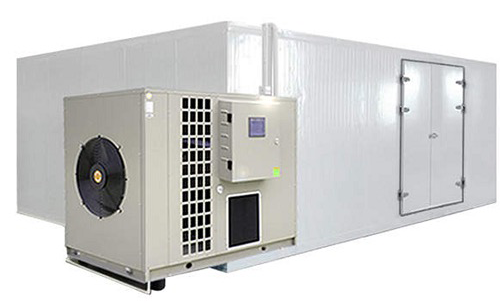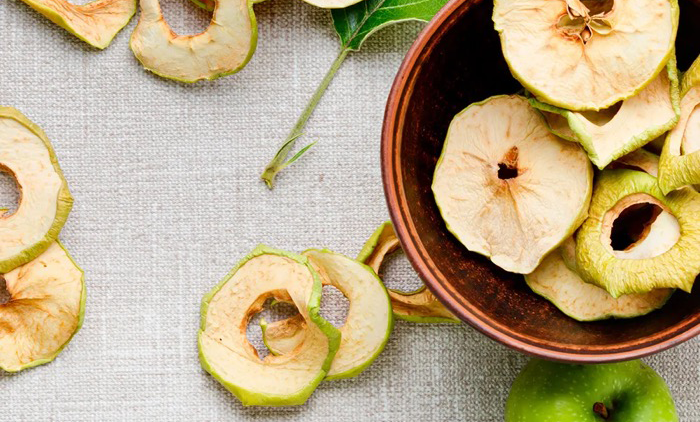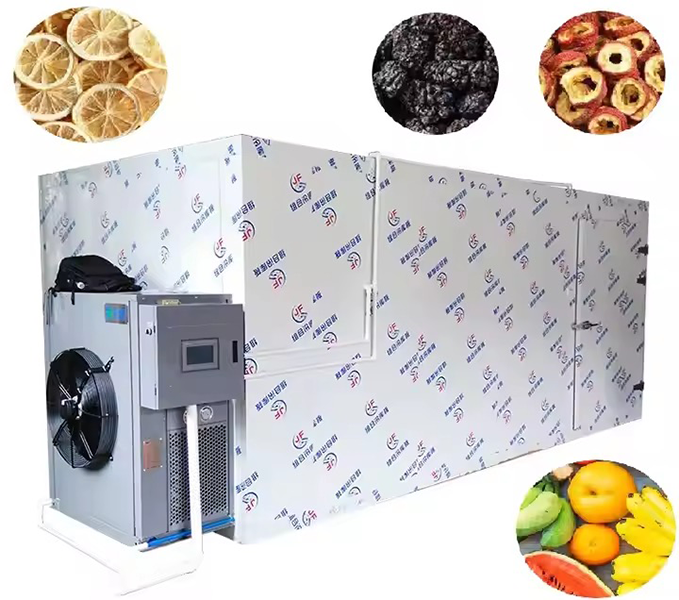
Content Menu
● Understanding Food Dehydrators
>> How Do Heat Pump Dryers Work?
● Benefits of Using Heat Pump Dryers
● Do Heat Pump Dryers Require a Water Supply?
● Key Components of a Heat Pump Dryer
● Operational Considerations
● The Drying Process Explained
● Common Applications of Heat Pump Dryers
● Comparing Heat Pump Dryers with Traditional Dryers
● Environmental Impact
● Conclusion
● FAQ
>> 1. What types of foods can be dried using a heat pump dryer?
>> 2. How long does it take to dry food in a heat pump dryer?
>> 3. Can I use my heat pump dryer indoors?
>> 4. What maintenance do heat pump dryers require?
>> 5. Are heat pump dryers noisy during operation?
● Citations:
In the realm of food processing and preservation, food dehydrators play a crucial role in extending the shelf life of various products. This article delves into the intricacies of food dehydrators, particularly focusing on heat pump dryers, their operational requirements, benefits, and functionalities.
Understanding Food Dehydrators
Food dehydrators are appliances designed to remove moisture from food items, thereby inhibiting the growth of bacteria, yeast, and mold. This process not only preserves food but also concentrates its flavors and nutrients. Among various types of food dehydrators, heat pump dryers have gained popularity due to their energy efficiency and effectiveness.

How Do Heat Pump Dryers Work?
Heat pump dryers operate on the principle of thermodynamics, specifically utilizing a refrigeration cycle to extract moisture from food. The key components include:
- Heat Pump System: This system absorbs low-temperature heat from the environment and converts it into high-temperature heat for drying purposes.
- Drying Chamber: Inside this chamber, food is placed on trays where hot air circulates to facilitate drying.
- Fan Mechanism: Fans help in distributing warm air evenly throughout the drying chamber.
The operation begins with the heat pump drawing in ambient air, which is then heated and circulated over the food items. Moist air is expelled, while the remaining moisture condenses and is either collected or drained away.
Benefits of Using Heat Pump Dryers
Heat pump dryers offer several advantages that make them an ideal choice for food preservation:
- Energy Efficiency: They consume significantly less energy compared to traditional drying methods, making them cost-effective in the long run.
- Nutrient Retention: The lower drying temperatures help in preserving vitamins and minerals that are often lost in higher temperature drying processes.
- Versatility: Suitable for a wide range of products including fruits, vegetables, meats, and herbs.
- Quality Preservation: Maintains the original color, shape, and flavor of the food.
Do Heat Pump Dryers Require a Water Supply?
One common question that arises regarding heat pump dryers is whether they need a water supply for operation. The answer is nuanced:
- Moisture Extraction: During the drying process, heat pump dryers extract moisture from the air inside the drying chamber. This moisture condenses into water which needs to be removed from the system.
- Water Connection Options:
- Some models come equipped with a self-draining feature that allows condensed water to be piped directly to a drainage system.
- Other models may require manual emptying of a water reservoir that collects condensation.
Thus, while not all heat pump dryers require a direct water supply like traditional washing machines do, they do need a mechanism for managing the moisture they extract during operation.
Key Components of a Heat Pump Dryer
Understanding the components that make up a heat pump dryer can help users appreciate its functionality:
- Compressor: Compresses refrigerant gas to raise its temperature.
- Evaporator Coils: Absorb heat from the surrounding air.
- Condenser Coils: Release heat back into the dryer while condensing moisture into water.
- Control Panel: Allows users to set temperature and drying time according to specific needs.

Operational Considerations
When operating a heat pump dryer, several factors should be considered:
1. Temperature Settings: Optimal drying typically occurs at lower temperatures (between 30°C to 70°C), which helps maintain food quality.
2. Humidity Control: Maintaining low humidity levels within the dryer enhances efficiency and reduces drying time.
3. Maintenance Needs: Regular cleaning of filters and coils is essential to ensure optimal performance and longevity of the machine.
The Drying Process Explained
The drying process in a heat pump dryer can be broken down into several stages:
1. Pre-Drying Preparation: Before placing food in the dryer, it's essential to prepare it properly. This may involve washing, cutting into uniform pieces for even drying, and blanching certain vegetables to preserve color and nutrients.
2. Loading the Dryer: Once prepared, food should be arranged on trays without overcrowding to allow adequate airflow around each piece. This ensures even drying throughout.
3. Setting Parameters: Users must set appropriate temperature and time based on the type of food being dried. For example:
- Fruits typically require lower temperatures (around 50°C) for longer periods.
- Vegetables may need higher temperatures (up to 70°C) but for shorter durations.
4. Monitoring Progress: During operation, it's advisable to check periodically on the progress of drying. Some advanced models come with built-in timers and alarms that notify users when drying is complete.
5. Cooling Down Phase: After reaching desired dryness levels, allow food to cool before packaging or storing. This helps prevent condensation inside storage containers.
Common Applications of Heat Pump Dryers
Heat pump dryers are versatile appliances suitable for various applications:
- Fruit Drying: Popular fruits such as apples, bananas, and strawberries can be dried into snacks or ingredients for baking.
- Vegetable Dehydration: Carrots, tomatoes, and peppers can be preserved for soups or stews throughout winter months.
- Meat Preservation: Making jerky from beef or poultry is another common use; however, proper marination before dehydration is critical for flavor enhancement.
- Herb Drying: Fresh herbs like basil or thyme can be dried for culinary use or tea production.
Comparing Heat Pump Dryers with Traditional Dryers
When evaluating different types of dryers available in the market today, it's useful to compare their features:
| Feature | Heat Pump Dryer | Traditional Dryer |
| Energy Efficiency | High | Moderate |
| Operating Temperature | Low (30°C - 70°C) | High (up to 90°C) |
| Nutrient Retention | Excellent | Moderate |
| Moisture Management | Self-draining options | Manual emptying required |
| Cost | Higher upfront cost | Lower upfront cost |
This table illustrates that while heat pump dryers may have a higher initial investment, their long-term benefits in energy savings and quality preservation can outweigh these costs over time.
Environmental Impact
As sustainability becomes increasingly important in consumer choices, heat pump dryers stand out due to their lower energy consumption compared to conventional methods. By using less electricity and maintaining lower operational temperatures:
- They contribute less carbon footprint.
- They promote environmentally friendly practices by reducing waste through effective food preservation methods.
Conclusion
Heat pump dryers represent an innovative solution for food dehydration, combining energy efficiency with effective moisture removal. While they do not require a conventional water supply like washing machines do, managing condensate from their operation is crucial for efficient functioning. As more consumers seek sustainable methods for food preservation, understanding these appliances will become increasingly important.

FAQ
1. What types of foods can be dried using a heat pump dryer?
Heat pump dryers can effectively dry various foods including fruits (apples, bananas), vegetables (carrots, tomatoes), meats (jerky), and herbs (basil, thyme).
2. How long does it take to dry food in a heat pump dryer?
Drying times vary based on the type of food and thickness but typically range from 4 to 12 hours.
3. Can I use my heat pump dryer indoors?
Yes, one of the advantages of heat pump dryers is that they do not require venting outside; they can be used indoors as long as there's adequate space for airflow.
4. What maintenance do heat pump dryers require?
Regular maintenance includes cleaning lint filters and checking evaporator coils for dust accumulation to ensure optimal performance.
5. Are heat pump dryers noisy during operation?
Most modern heat pump dryers operate quietly; however, some noise may occur due to fan operation depending on model specifications.
Citations:
[1] https://aradmachineryco.com/article/How-to-make-a-food-dehydrator
[2] https://www.familyhandyman.com/article/heat-pump-dryer/
[3] https://etsolutions.in/10-amazing-benefits-of-electrical-food-dehydrator-machines/
[4] https://www.fooddehydratorsales.com
[5] https://www.aimheatpump.com/a-news-does-heat-pump-dryer-need-water-connection
[6] https://www.alamy.com/stock-photo/food-dehydrator.html
[7] https://www.ike.cn/video.html
[8] https://www.youtube.com/watch?v=DeN-h6opueM
[9] https://www.bxdrymachine.com/food-drying-machine.html
[10] https://www.choice.com.au/home-and-living/laundry-and-cleaning/dryers/articles/what-is-a-heat-pump-dryer
[11] https://www.dreamstime.com/photos-images/food-dehydrator.html
[12] https://www.youtube.com/watch?v=1fP2rSLjys4
[13] https://www.youtube.com/watch?v=S-hDpODzIV0











